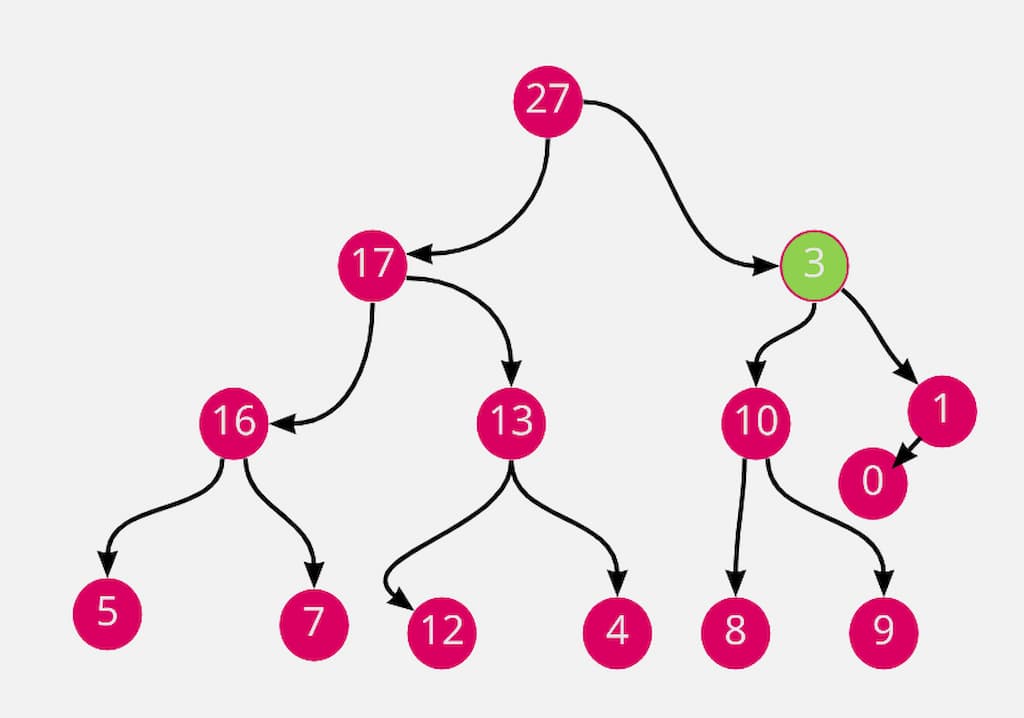
ПІДТРИМАЙ УКРАЇНУ
ПІДТРИМАТИ АРМІЮ
DSA: Heap - Key Questions and Challenges

DSA: Heap - Key Questions and Challenges
DSA: Heap - Key Questions and Challenges
1. Basic Heap Operations
- Implement a Min Heap
- Implement a Max Heap
- Insert an Element into a Min Heap
- Insert an Element into a Max Heap
- Delete the Minimum Element from a Min Heap
- Delete the Maximum Element from a Max Heap
- Peek the Minimum Element in a Min Heap
- Peek the Maximum Element in a Max Heap
- Heapify an Array (Build a Heap)
- Convert an Array into a Min Heap or Max Heap
2. Heap Construction and Maintenance
- Convert a Min Heap to a Max Heap
- Convert a Max Heap to a Min Heap
- Implement Heap Sort (Ascending and Descending Order)
- Decrease Key in a Min Heap
- Increase Key in a Max Heap
- Find the Kth Largest Element in an Array (Using a Max Heap)
- Find the Kth Smallest Element in an Array (Using a Min Heap)
- Merge K Sorted Lists (Using a Min Heap)
- Merge K Sorted Arrays (Using a Min Heap)
- K Closest Points to the Origin (Using a Min Heap)
3. Heap-Based Problem Solving
- Top K Frequent Elements (Using a Min Heap)
- Find Median of a Stream of Integers (Using Two Heaps)
- Sliding Window Maximum (Using a Double-Ended Queue or Heap)
- Kth Largest Element in a Stream (Using a Min Heap)
- Kth Smallest Element in a Stream (Using a Max Heap)
- Shortest Path in a Weighted Graph (Dijkstra’s Algorithm with a Min Heap)
- Find the Range of a Given Subarray with Minimum Sum (Using a Min Heap)
- Find the Median of a Set of Numbers (Using Two Heaps)
- Longest Subarray with Sum Less Than K (Using a Min Heap)
- Reconstruct a Heap from a Given Set of Values
4. Advanced Heap Problems
- Find All Valid Combinations with Sum Equal to Target (Using a Min Heap)
- Implement a Priority Queue Using Heaps
- Find the Maximum Sum of a Subarray of Size K (Using a Max Heap)
- Find the Maximum Sum of k Non-Overlapping Subarrays (Using a Max Heap)
- Heap-Based Approach to Solve Job Scheduling Problems
- Implement a Median Maintenance Algorithm (Using Two Heaps)
- Find Top K Elements in a Matrix (Using a Min Heap)
- Sort K-Sorted Array (Using a Min Heap)
- Rearrange Characters in a String so No Two Adjacent Characters are the Same (Using a Max Heap)
- Implement a Heap-Based Algorithm to Solve the Traveling Salesman Problem (Approximate Solution)
5. Heap Applications in Graph Algorithms
- Implement Prim’s Algorithm for Minimum Spanning Tree (Using a Min Heap)
- Implement Kruskal’s Algorithm for Minimum Spanning Tree (Using Union-Find and Min Heap)
- Find the Shortest Path in a Graph with Non-Negative Weights (Using Dijkstra’s Algorithm with a Min Heap)
- Find the Longest Path in a Graph with Positive Weights (Using a Max Heap)
- Compute the Minimum Cost Path in a Weighted Grid (Using a Min Heap)
- Find All Pair Shortest Paths (Using Floyd-Warshall with Heap Optimization)
- Implement A* Search Algorithm (Using a Min Heap)
- Compute the Shortest Path Tree from a Source Node (Using Dijkstra’s Algorithm with a Min Heap)
- Find the Most Frequent Path in a Graph (Using a Max Heap)
- Compute the Minimum Cost to Connect All Nodes (Using Prim’s Algorithm with a Min Heap)
6. Additional Key Questions:
- How does a Fibonacci Heap improve certain operations?
- Implement a heap to solve real-time stream processing challenges.
- Use heaps for efficient skyline problems.
- Solve interval scheduling and meeting room allocation with heaps.
- Apply heap-based techniques for topological sorting.
This expanded list provides a detailed roadmap for understanding, implementing, and solving complex problems using heaps, making it a vital resource for mastering this data structure.
Ресурс : dev.to

